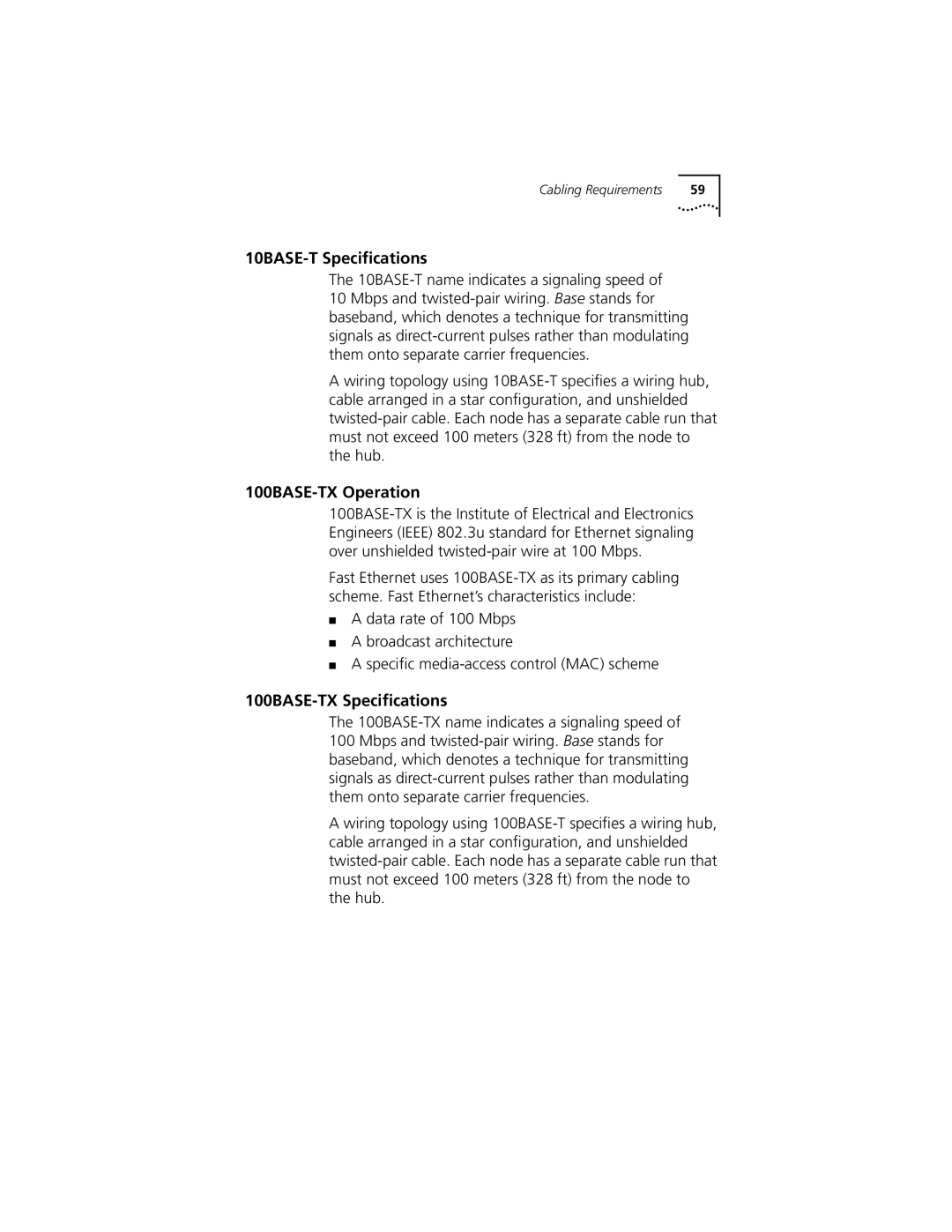10BASE-T Specifications
The 10BASE-T name indicates a signaling speed of 10 Mbps and twisted-pair wiring. Base stands for baseband, which denotes a technique for transmitting signals as direct-current pulses rather than modulating them onto separate carrier frequencies.
A wiring topology using 10BASE-T specifies a wiring hub, cable arranged in a star configuration, and unshielded twisted-pair cable. Each node has a separate cable run that must not exceed 100 meters (328 ft) from the node to the hub.
100BASE-TX Operation
100BASE-TX is the Institute of Electrical and Electronics Engineers (IEEE) 802.3u standard for Ethernet signaling over unshielded twisted-pair wire at 100 Mbps.
Fast Ethernet uses 100BASE-TX as its primary cabling scheme. Fast Ethernet’s characteristics include:
■A data rate of 100 Mbps
■A broadcast architecture
■A specific media-access control (MAC) scheme
100BASE-TX Specifications
The 100BASE-TX name indicates a signaling speed of 100 Mbps and twisted-pair wiring. Base stands for baseband, which denotes a technique for transmitting signals as direct-current pulses rather than modulating them onto separate carrier frequencies.
A wiring topology using 100BASE-T specifies a wiring hub, cable arranged in a star configuration, and unshielded twisted-pair cable. Each node has a separate cable run that must not exceed 100 meters (328 ft) from the node to the hub.
